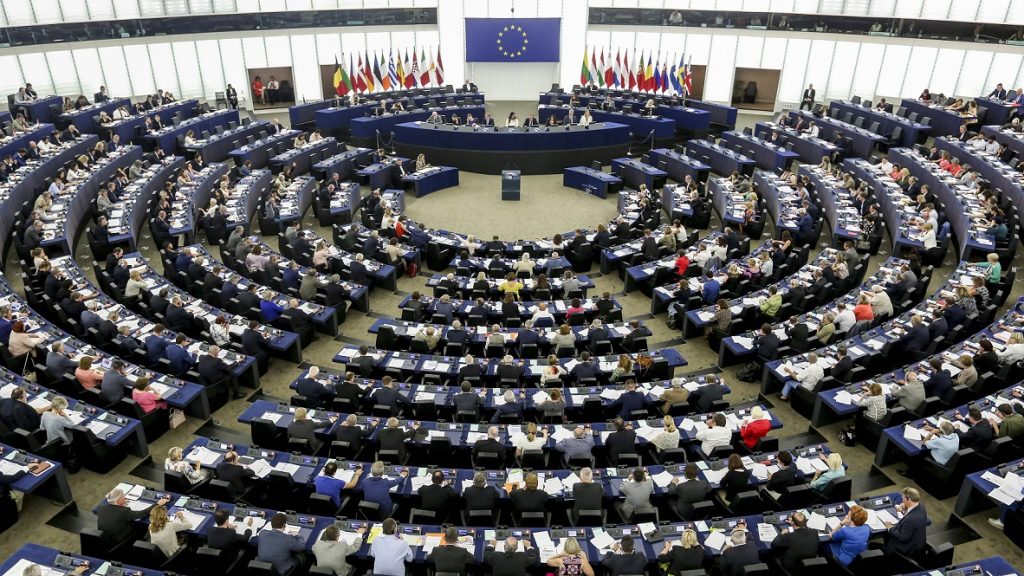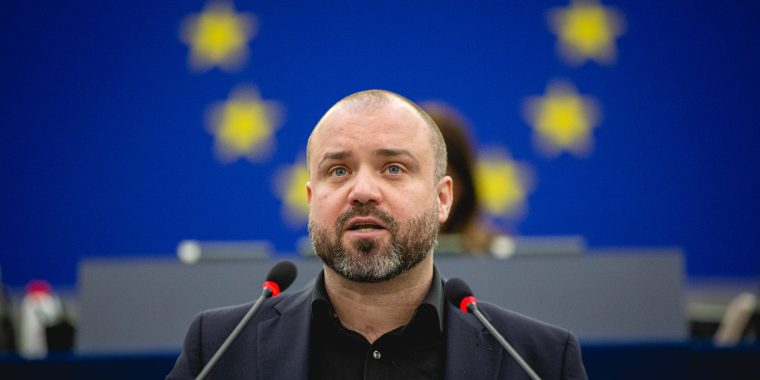The recent news that asbestos is two-to-three times as deadly as previously thought, reported here on EUobserver, has brought new — and needed — attention to an old and lingering problem: that of the silent killer, which continues to haunt us.
It comes after the European Commission in the autumn, finally, published its proposal for a revision of the directive on the protection of workers from the risks related to exposure to asbestos at work.
New rules are very much needed, as every year tens of thousands of Europeans die from asbestos-related illnesses and conditions, many without it even being recognised as a work-related death.
In 2019, it is estimated that at least 70,000 inhabitants in the EU dies from asbestos-related reasons. To put it into context, that figure is more than three times higher than the number of people killed in traffic that year.
The seriousness of the asbestos situation and the risk that the coming renovation and energy-efficiency wave will increase potential exposure, is the reason why we, in the European Parliament, already in 2021 demanded firm action. It happened when a very large majority in the parliament, with support from left, right, and centre, adopted our report with recommendations to the commission on protecting workers from asbestos.
This report laid out a string of requirements for what would constitute an adequate revision of the directive. It is a report that aimed for, and achieved, broad political backing, precisely so that we could use it to move forward.
As the rapporteur, I was proud of the consensus we ensured, and of how it was endorsed by so many of those that actually encounter asbestos as part of their work.
Revision needs revising
Therefore I was also surprised, disappointed, and frustrated when I read the proposed revision form the commission. Because, very clearly, the proposal for revision is itself in urgent need of a thorough revision.
Something that the new figures of asbestos being even deadlier than previously thought, should underline.
All of this is not to say that there are not also good things in the revision, because there are. Several of them with a clear line to the work of the European Parliament. These include:
In addition to the actual revision of the directive, a “communication” has also been presented, with further measures and legislation that we can expect during 2022 and 2023.
A legislative proposal on mandatory screening and registration of asbestos in buildings, for example in connection with sales and rentals.
Proposals for a common digitised format for registration of all building-related data, including the results of the asbestos screening — a so-called ‘EU building logbook’.
Steps to possibly update the commission list of occupational diseases.
My disappointment and frustration comes from the parts that either contradicts or directly omits what has already been called for. This means that, especially, the following five points will have to be changed:
1. There must be a clear tightening of the directive, including removing any derogations from the directive’s protective measures. If not, it will still in far too many cases be possible to deviate from the parts which are otherwise supposed to ensure the protection and supervision of employees’ health.
2. There must be stricter requirements for sampling in connection with risk assessments. This includes certification of the personnel collecting the samples.
3. There must be a requirement for feasibility studies/screenings before energy renovations begin.
4. Introduction of an authorisation-scheme for companies working with asbestos and certified training of colleagues who work with asbestos.
Last but certainly not least:
5. We have to lower the limit value for asbestos set by the directive from the proposed 10,000 fibres per cubic meter, to 1,000 fibres per cubic meter, in line with what has already been decided by the EU Parliament.
So where do we stand now?
With all of the above in mind, I am both frustrated and hopeful. It would have been great to have the proposed directive already living up to our requirements from the beginning.
We are not there, but we are in a place from which we can reach our desired goal. It is my hope and belief that we, in the European Parliament, can revise the proposed revision to such an extent, that it will provide much needed better protection for those, whose work exposes them to asbestos. That makes me hopeful.
The opinion piece was originally published on EUobserver on 30 November, and can be found here.












